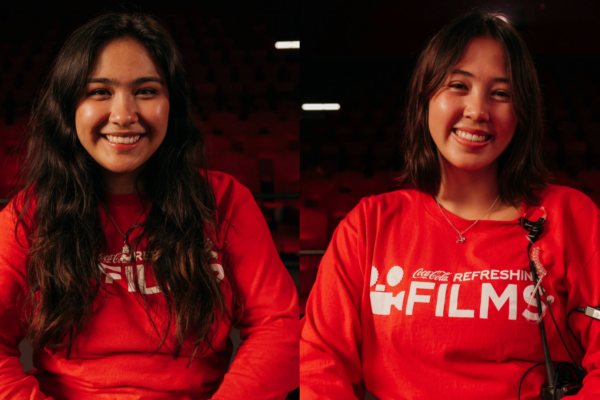Never did Erik Linstead’s Ph.D. in computer science seem so inadequate as when his 3-year-old daughter, Hannah, was diagnosed with autism spectrum disorder.
“If I had a Ph.D. in psychology or something like that, maybe I could do something useful for her,” Linstead ’01 thought to himself at the time. “But then when I realized there was some interesting stuff to be done in machine learning, I decided the only rational decision was to quit my industry job and come to Chapman, where I could focus on building a research lab around machine learning and autism.”

So in 2015, Linstead left his position at Boeing and started down an academic path that led to his current role as principal investigator of the Machine Learning and Assistive Technology Lab at Chapman. And that “interesting stuff” he saw coming through machine learning? Now it’s being done by Linstead, his faculty colleagues and their students at Chapman to address autism needs.
Research is highlighted in a report by American Academy of Pediatrics
Earlier this year, the lab team’s research was featured in a clinical report published by the American Academy of Pediatrics. The lab’s data analysis sheds new light on the link between intensity of clinical intervention and developmental progress by young people who are on the autism spectrum. Basically, the more directed time a caregiver invests with a youngster, the better the outcomes.
“The clinical report is sort of a best practices guide for providing treatment to kids on the spectrum,” Linstead said. “My colleagues and I are filling a noticeable gap on applying machine learning to behavioral data to improve treatment.”
By focusing on the relationship between treatment intensity and learning outcomes, the report is doing more than influencing developmental interactions. It’s convincing insurers to pay for the extra caregiving time, Linstead said. That’s huge for the families of the roughly 1 in 59 U.S. children diagnosed with the neurodevelopment disorder.
“Treatment hours alone can account for 35% of the learning outcomes being mastered,” he said. “That means as you consider which treatment knob to turn, the intensity knob is one of the biggest on the dial. When you turn it up, you get lots of response.”

Collaboration with industry partners moves the project forward
Machine learning uses algorithms to build a mathematical model for data analysis. As Linstead’s team uses machine learning and clinical data to evaluate treatment strategies, the lab benefits from a number of important partnerships, including with the consumer credit company Experian, which has funded its research. In addition, the Center for Autism and Related Disorders (CARD) provides the lab with large data sets and expertise for projects.
The association with CARD has boosted research on multiple fronts. The partnership springs from a connection between Linstead and Dennis Dixon, chief clinical officer at the Center for Autism.
“CARD had been collecting this data, and they were at a point where they really wanted to start doing some interesting analysis,” Linstead said. “They ran into obstacles finding the right people for collaboration. Through a mutual acquaintance, Dennis and I were introduced, and it’s one of those things where you meet someone and you just know right off that you’re going to be great friends and colleagues.”
 A former student of Linstead plays a key faculty role on the team
A former student of Linstead plays a key faculty role on the team
Over the years, the lab’s collaborative connections have grown. Elizabeth Stevens ‘10 (Ph.D. ’18), a former data science student of Linstead at Chapman, left a job with Standard and Poor’s in Denver to join the research team. Last year, Stevens also took on the role of program director for the Fowler School of Engineering.
“I’m looking at the data and outcomes and trying to figure out, what is the data telling us? How can we tailor it so everyone can be successful?” Stevens said. “For me, it’s exciting that we get to help people in need, even though we’re not right there with the child, delivering therapy.”
For Linstead, the work has always been about the thousands of young lives impacted by the lab’s data analysis. And one life that’s as close to him as his own heart.
Hannah is now old enough that he can joke with her as he also advocates for the resources she needs to thrive. She still struggles with some social and behavioral issues, “but I mean her dad’s a computer scientist, so she probably comes by some of that honestly,” Linstead said with a chuckle.
Sometimes when he is working on a manuscript about the lab’s analysis, Hannah will look over his shoulder to read the abstract, then want to talk about the research and how it pertains to her.
“That’s fun,” Linstead said.
From the day Hannah was diagnosed, “my life and my family’s life has never been the same,” he added. “But all things considered, we’re in a good place.”



